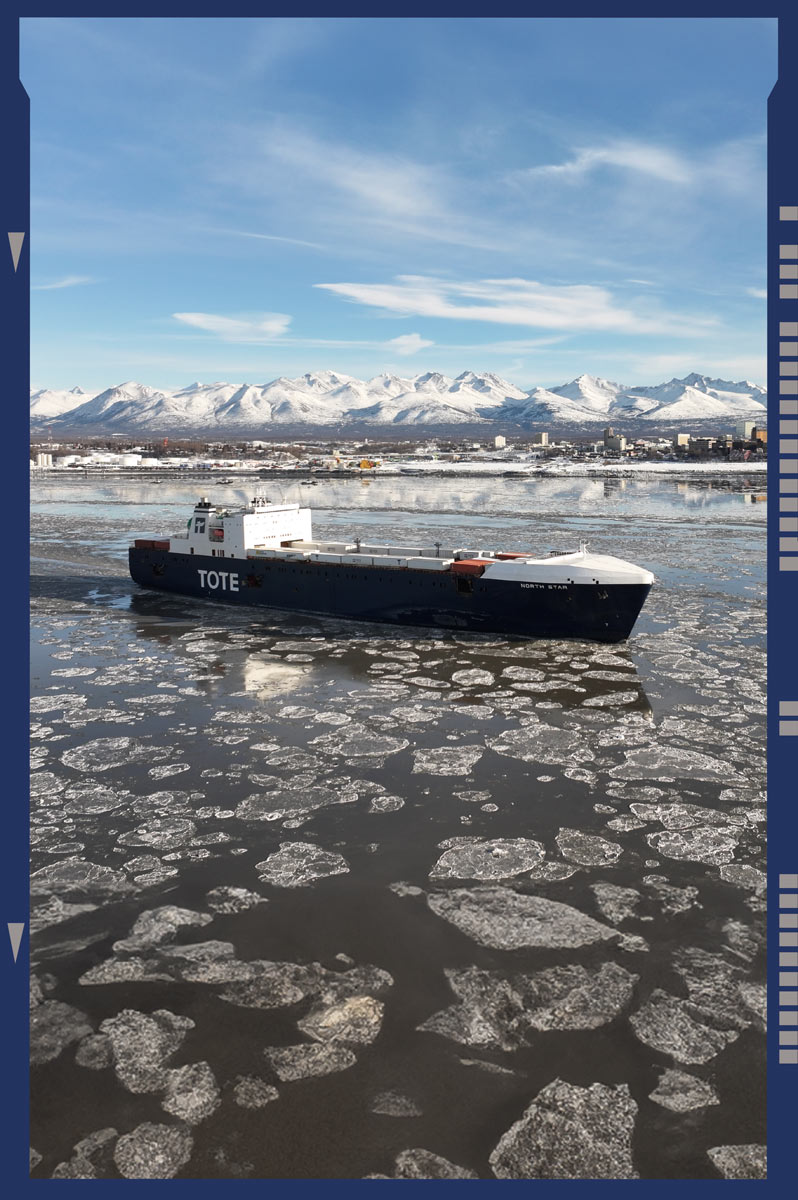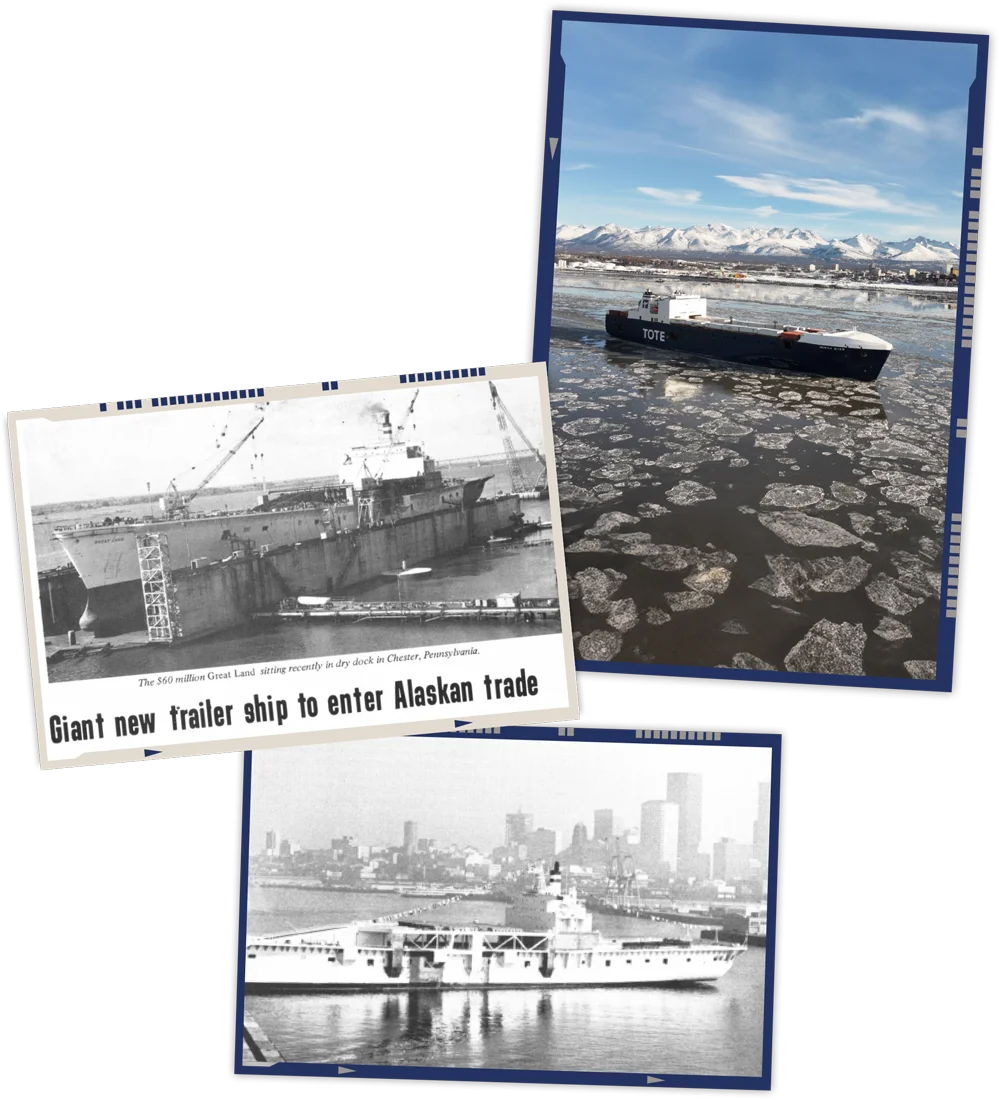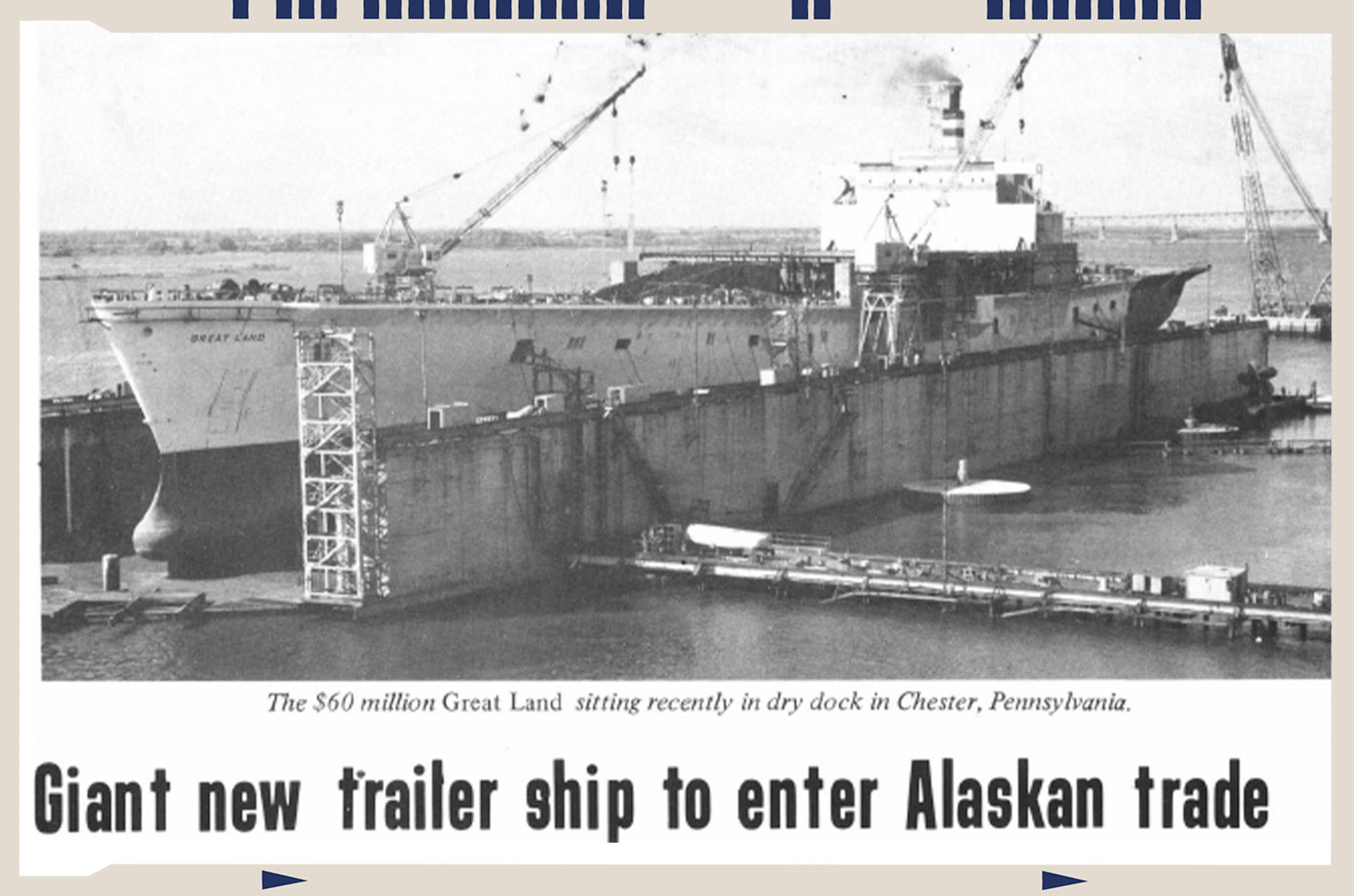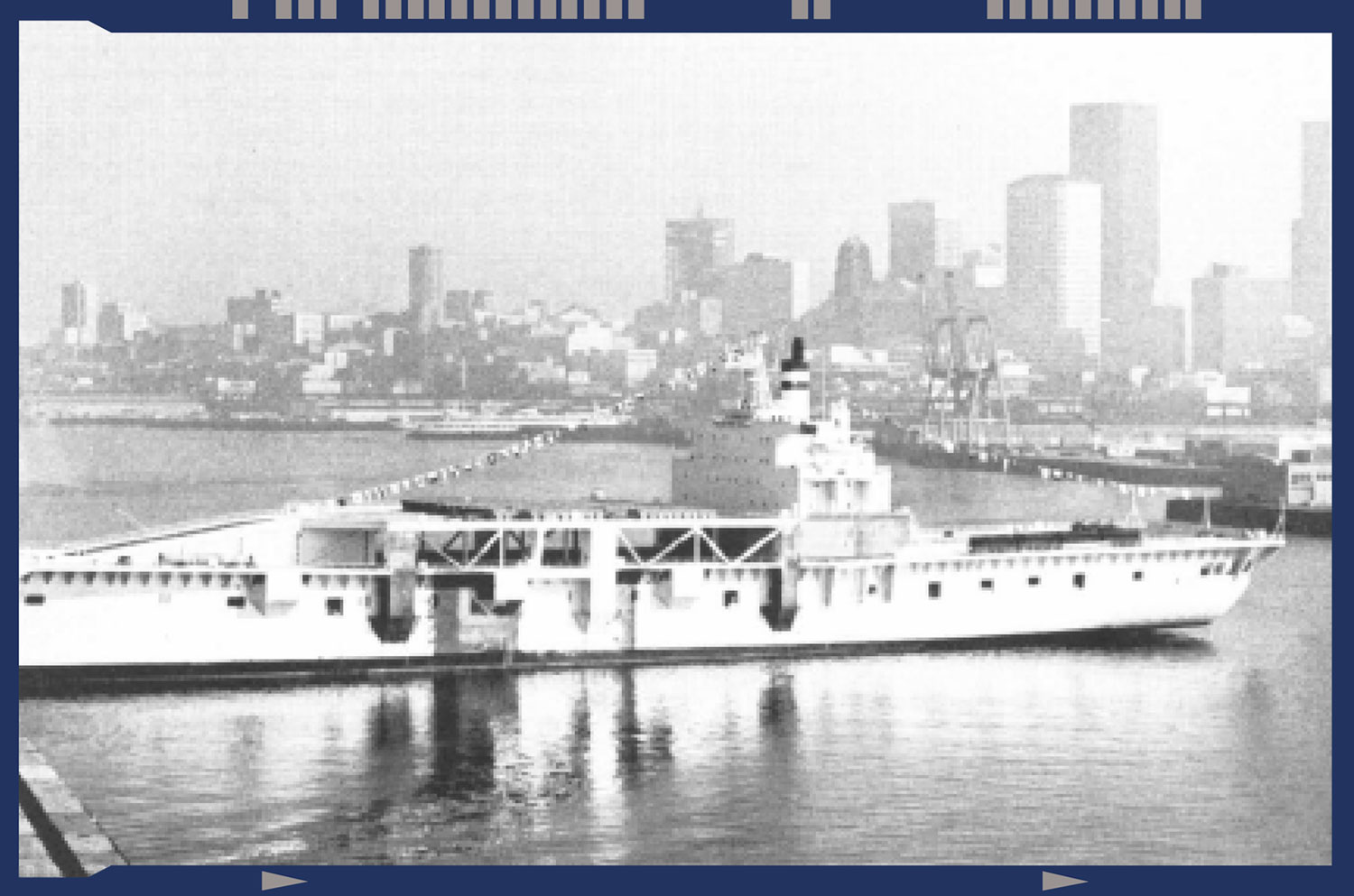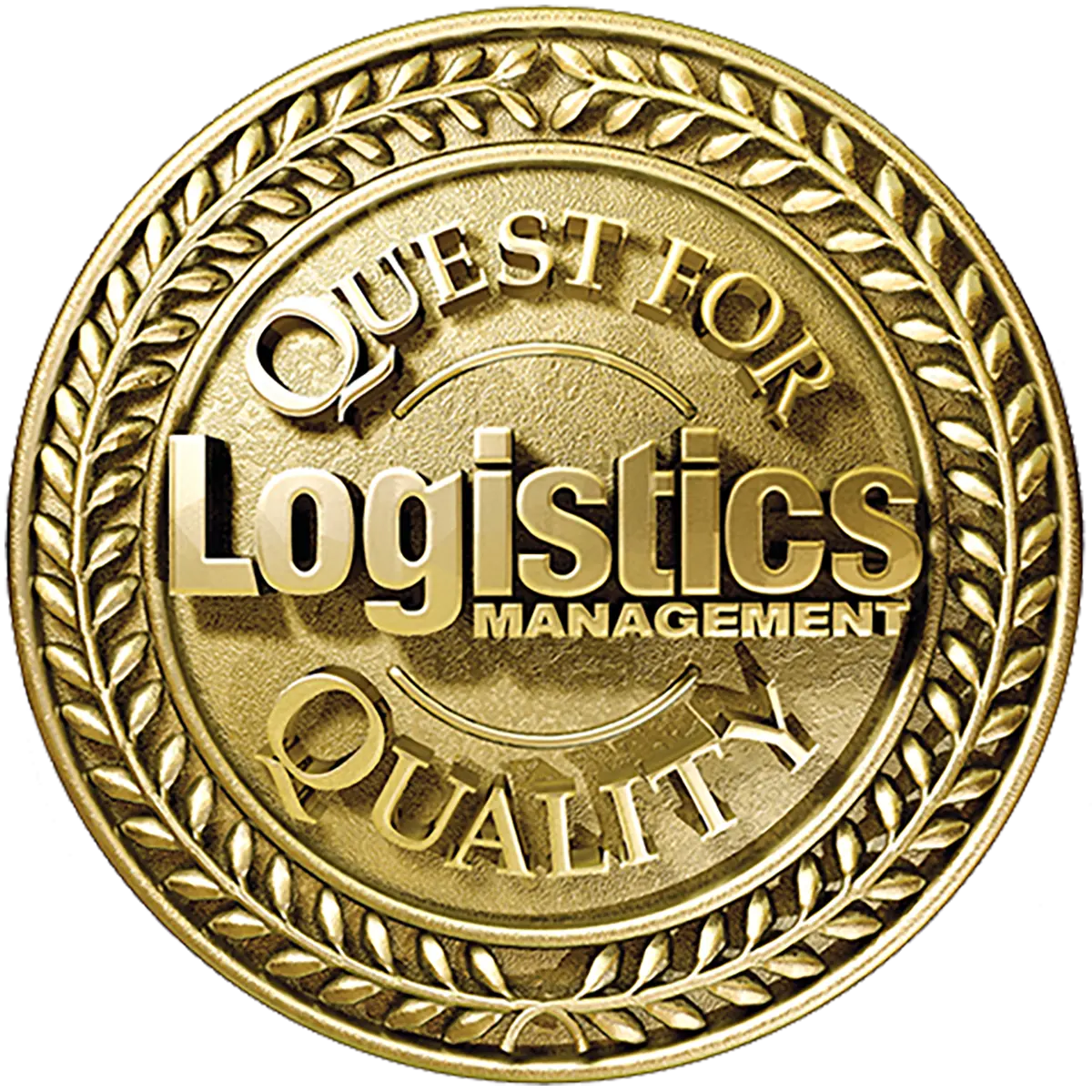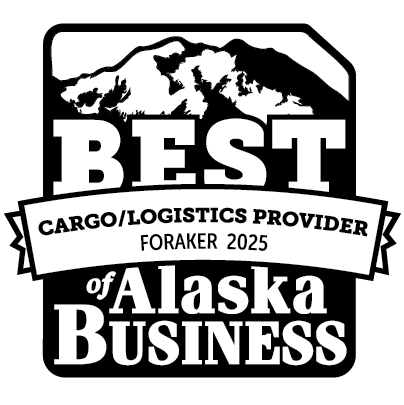Highlights
About The Cover


-
Editorial
Tasha Anderson, Managing Editor
Scott Rhode, Editor/Staff Writer
Rindi White, Associate Editor
Emily Olsen, Editorial Assistant -
PRODUCTION
Monica Sterchi-Lowman, Art Director
Fulvia Caldei Lowe, Production Manager
Patricia Morales, Web Manager -
BUSINESS
Billie Martin, President
Jason Martin, VP & General Manager
James Barnhill, Accounting Manager -
SalesCharles Bell, VP Sales & Marketing907-257-2909 | cbell@akbizmag.comChelsea Diggs, Account Manager907.257.2917 | chelsea@akbizmag.comTiffany Whited, Marketing & Sales Specialist907-257-2910 | tiffany@akbizmag.com
-
Contact
akbizmag.com | (907) 276-4373
Press releases: press@akbizmag.com
Billing: billing@akbizmag.com
Subscriptions: circulation@akbizmag.com
From the Editor
laska has fundamentally changed since oil was discovered at Prudhoe Bay, and, in line with the oil industry’s overwhelming influence, it was an essential player in this magazine’s origin story.
The masthead in our inaugural January 1985 issue listed two editorial employees: publisher Robert F. Dixon and editor Paul Laird. In that issue, the two co-wrote an introductory letter, but Laird didn’t start a monthly Letter from the Editor until November of 1987, at which point his title had shifted to executive editor.
In that first Letter from the Editor, Laird explained that he had a friend who worked for Sohio, officially titled the Standard Oil Company (Ohio), in Alaska, and since Laird was in search of a travel destination that was both “bizarre” and housed someone he knew so he could rely on them for accommodations, Alaska fit the bill.
Laird knew little about the state except that it was supposed to be beautiful and “it was a darned shame they had to build that oil pipeline and destroy the wilderness up here. I only knew that because the Wilderness Society magazine tucked in my carry-on said so.”

onprofits play a vital role in Alaska’s economy, serving as employers, revenue generators, and providers of essential services. These insights are detailed in The Foraker Group’s latest report, Alaska’s Nonprofit Sector: Generating Economic Impact. This is the seventh such study released by The Foraker Group, a 501(c)(3) organization that strengthens Alaska’s nonprofit and tribal organizations through educational opportunities, shared services, organizational development, public policy, and fiscal sponsorship.
Laurie Wolf, Foraker Group president and CEO, views nonprofits as “the backbone” of Alaska’s economy. Their contributions often go unnoticed, yet their impact is pervasive. “You can’t go through your day in rural or urban Alaska without engaging with a nonprofit. Even when you don’t know it; it’s just part of your everyday life,” Wolf explains.




Visit unitedwayanc.org.
for a bright tomorrow
allas Sprout awoke in the night to a sound he had not immediately recognized. Groggy from the nearly two-day trip, not to mention being responsible for eight travel companions, Dallas brought himself to the window to investigate the source of this disturbance.
Looking out onto a nondescript St. Louis, Missouri, street, he noticed nothing peculiar at all. Just some aggressive drivers honking their horns, angry at some pedestrians who chose to jaywalk as opposed to walking at the designated crosswalk just up the street.
Content with his findings, Dallas returned to bed, smiling as he realized just how far he and his travel companions had come.



Northbound: 253.449.2112
Southbound: 907.276.5868

chery Umanzor is thinking about uses for seaweed: Food. Biofuels. Animal feed. Biodegradable packaging.
“Seaweeds have a use,” she emphasizes. “There’s a reason why it’s the fastest growing industry in the world. [But] realistically, [the United States] cannot compete with Asia or Latin America” when it comes to exporting seaweed products to the rest of the world.
Since April 2024, Umanzor has led a UAF research team in the study of seaweeds in Southeast. The team is less interested in the use of biomass—the plant material produced by seaweed—than in the potential of extracting rare earth elements (REEs) from them.

he best-laid plans of mice and men oft’ go awry. The translated line from Robert Burns’ poem “To a Mouse” is a reminder that, no matter how carefully a project is planned, something may still go wrong. Construction contractors are no strangers to changes to their best-laid plans, so they rely on contracts to outline how such changes should be handled by all parties involved.
However, due to the complexity of modern contracts, interpretations can easily differ and cause disagreements—or worse, disputes. To mitigate disputes, contractors rely on legal services from firms familiar with construction industry law to find a resolution and keep them apprised of their rights and responsibilities.

lose your eyes. Imagine an attorney. What do you see? More than likely it’s two suited professionals arguing passionately, perhaps dramatically, in a courtroom on behalf of their client.
Turns out that image is far from reality.
“The exact opposite is true,” says Lee Baxter, a civil litigator and shareholder at Schwabe’s Anchorage office. “Most attorneys never go into a courtroom. There are far more non-litigation attorneys in Alaska than there are litigation attorneys.”
420 L Street, Suite 400
Anchorage, AK 99501
(907) 339-7125
Local Roots, National Reach
ike the water a fish swims in without recognizing it, LLCs are everywhere. Not just the limited liability companies themselves; the letters are part of the background of everyday commerce. The abbreviation appears in business names so often that it becomes invisible.
Similar suffixes suffuse signage, saturating scenery with “Inc.,” “Corp.,” and “Co.” Yet these short forms are descriptive and understandable, whereas “LLC” is opaque and technical, often irrelevant and left unmentioned.
“It is typical to omit ‘LLC’ from a company name in casual conversations, social media, and marketing materials,” says Sarah Gillstrom, a partner at the law firm of Davis Wright Tremaine. “However, the full company name should be used, including the LLC designation, in legal documents, banking documents, and tax documents.”
University of Alaska Fairbanks


Support your employees as they enroll in one of UAF’s in-person degree or certificate programs, or a fully online program with UAF eCampus. Empower them to get one step closer to their career goals — on their schedule, wherever they are.
Why Partner with UAF?
- 10% tuition discount for eCampus courses.
- Accredited education from anywhere in the world.
- Customize full or partial payment plans for employees.
www.uaf.edu/corporate-partnerships/

We invited licensed Alaskan lawyers to nominate fellow professionals whom they think excel in providing legal services. A third-party data collection specialist verified that the nominated individuals have a current law license. The final list of Legal Elite represents notable practicing lawyers in the state, selected by those who are intimately knowledgeable about what it takes to excel in the field.
Lawyers named among the Legal Elite occupy a range of roles, from working at government agencies or traditional law firms to corporate counsel or “hang a shingle” small practices. This list is not a directory of attorneys for hire; many would be happy to provide legal services to any client, but some already have briefcases full of other business. What this list does represent is the cream of the legal industry crop in Alaska.

A Winning Combination
Ballad Spahr and Lane Powell have joined forces. Our combined firm now has more than 260 dedicated deal lawyers handling hundreds of transactions annually, from small and mid-size deals to those with value in excess of $2 billion. Our expanded bench and knowledge across various industries position us to handle transactions for clients in nearly every sector—from tech titans and education centers to health care and life sciences innovators.
750+ lawyers. 18 U.S. offices. Committed to your success and built for any deal.
Select 2024 Pacific Northwest Representative Transactions









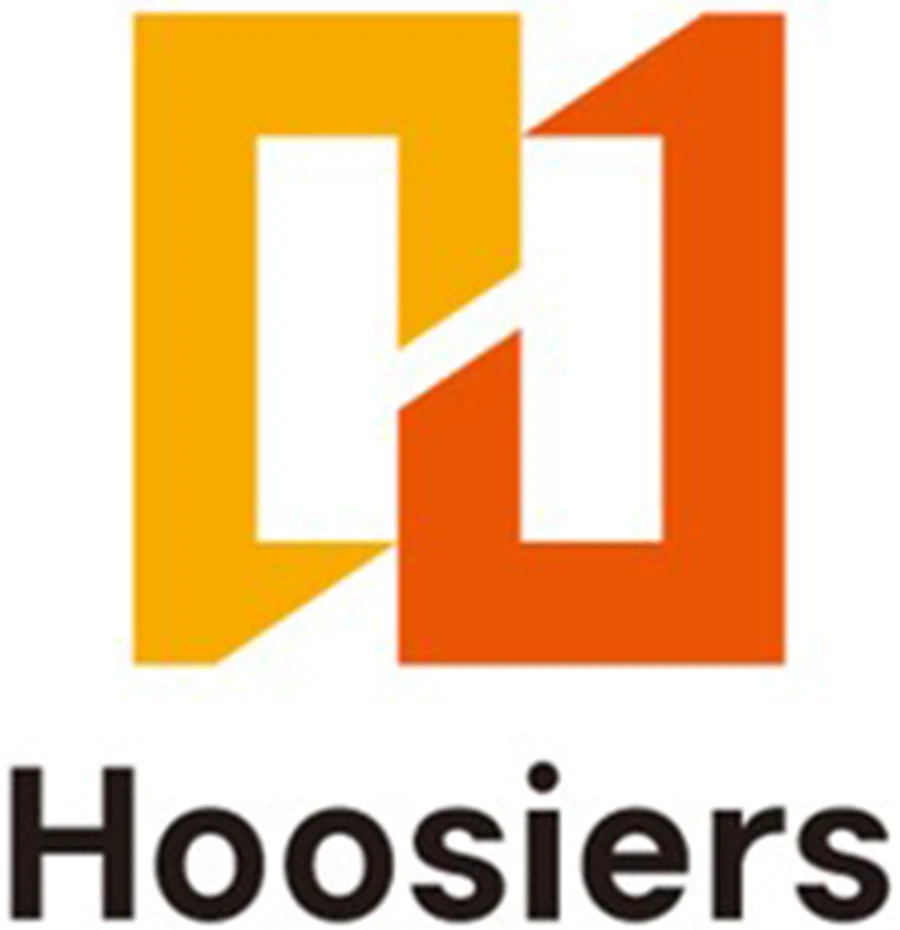








































attorneys recognized as
Alaska’s Legal Elite




f oil and gas were the sole focus of this magazine, the topic would still justify coverage of practically every other type of Alaska business. Supplies and services for the state’s premier industry are, in microcosm, the same that sustain the economy generally: hauling freight, building infrastructure, provisioning materials and equipment, and accommodating weary workers after a long day’s labor, to name but a few.
Just as oil and gas activity echoes Alaska business writ large, the ups and downs of the industry are writ within Alaska Business, as these pages have covered forty years of boom and bust cycles. This special section reflects on that past while looking ahead to present-day projects with near-future payoffs, as well as fortunes further over the horizon.



ew development on the North Slope has brought hope that daily throughput of the Trans Alaska Pipeline System (TAPS)—which has seen a steady decline since its 1988 peak of 2 million barrels per day—will see a marked upswing.
The flow in the pipeline is already increasing. Alyeska Pipeline Service Company, which operates TAPS, reported in May an average of 478,167 barrels per day moving from the North Slope to Valdez, a significant jump over the 2024 per-day throughput average of 464,784 barrels. Alyeska reports the daily per-barrel throughput average has remained steadily in the 480,000 range since December 2024, peaking at 487,682 barrels per day in January 2025.
What happened in December 2024? The recent upward trend can be attributed largely to ConocoPhillips Alaska, which started adding oil from its Nuna project to the pipeline on December 17, earlier than expected.

laska’s energy sector is gaining serious momentum through three major developments: promising exploration finds on state land, new federal territory openings, and expanded leasing initiatives that could reshape the state’s energy landscape over the next decade.
orrendous weather, impassable roads, severe temperatures, and lack of infrastructure limit the movement of freight and passengers on the North Slope. For companies that specialize in these logistics, however, the challenge is part of the fun—as is knowing that they’re providing North Slope communities with the goods needed to survive, and supplying companies with materials and equipment to operate year-round.
“We genuinely believe we have one of the most incredible jobs on earth,” explains Don Kious, general manager of UIC Oil & Gas Support. A subsidiary of Ukpeaġvik Iñupiat Corporation, UIC Oil & Gas Support works alongside UIC subsidiary Bowhead Transport to move people, freight, fuel, and supplies across some of the most unforgiving terrain in North America.
“We serve as the lifelines of the Arctic,” he adds. “We’re not just transporters; we’re connectors.”
“Our company prides itself on putting the customer first,” says John Jansen, vice president and general manager of Lynden Oilfield Services, part of the Lynden family of companies. “We are innovative in how we operate, and if we see an opportunity to improve our customers’ operations by helping them with something, we’re big on finding solutions.”

Matthias Breiter | Lynden
to Serve
Parts and support for industrial customers
By Terri Marshall
Matthias Breiter | Lynden
or three days in June, the North Slope was cut off. Flooding from the Sagavanirktok River carved a gap into the Dalton Highway at milepost 315. A culvert collapsed, wiping out 80 feet of road. Even as crews worked to fill the 30-foot-deep gully, more flooding 30 miles north damaged an embankment along the highway.
Yet the haul road was only closed from June 14 to June 17, a much shorter shutdown than a flood disaster in 2015 that required re-engineering the riverbank. Governor Mike Dunleavy declared an emergency to bypass environmental rules to expedite repairs and apply for federal repair funds. The response was sudden and swift; it must be, to maintain access along such a vital artery.
The Dalton Highway provides access to the North Slope, where numerous projects are underway including Santos’ Pikka Project, ConocoPhillips Alaska’s Willow project, and a number of other pilot projects expected to enhance the state’s oil production. The efficient, safe, and timely transport of goods and equipment needed for these projects is managed by Alaska businesses by land, air, and sea.


n March the Alaska Gasline Development Corporation (AGDC) and Glenfarne Group announced an agreement for Glenfarne to become the majority owner of Alaska LNG, a project intended to deliver North Slope natural gas to in-state markets and beyond.
Under the agreement, Glenfarne acquired 75 percent of AGDC subsidiary 8 Star Alaska, which is developing Alaska LNG as three subprojects: an 807-mile, 42-inch pipeline; an LNG export terminal in Nikiski; and a North Slope carbon capture plant. Glenfarne stated, “Phase 1 of the project will kick off immediately, prioritizing the development and final investment decision of the pipeline infrastructure needed to deliver North Slope gas to Alaskans as rapidly as possible.”
In May, Glenfarne selected Worley to perform additional engineering work and to prepare a final cost estimate “in sufficient detail to achieve final investment decision for the pipeline,” according to Glenfarne, which also stated at the time that it anticipates a final investment decision in 2025. The most recent cost estimate from June 2020 was $38.7 billion, a $5.5 billion decrease from a 2015 estimate when major North Slope producers were part of the venture. The economics of megaprojects have, since 2020, fluctuated massively.

Call today.
Natalia | Adobe Stock
Calm Voices
Crisis communications in emergency management
By Tracy Barbour
risis communication—a strategic approach to corresponding with people and organizations during a disruptive event—is an important aspect of emergency management. It involves not only the dissemination of timely and accurate information but also building trust through transparency and proactive engagement.
Crises are inevitable for every organization, no matter its size or the services it provides, according to Heather Cavanaugh, Alaska Communications’ vice president of external affairs and corporate communications. “For a company like Alaska Communications, which provides critical [telecommunications] services to the community, having crisis communicators is non-negotiable for us,” she says. “Our crisis communication team is an integral part of our company’s larger crisis management team.”
Come
together



Events | Concerts | Conferences | Conventions | Banquets | Meetings | Trade Shows | Weddings | In-house Catering | Equipment Technology
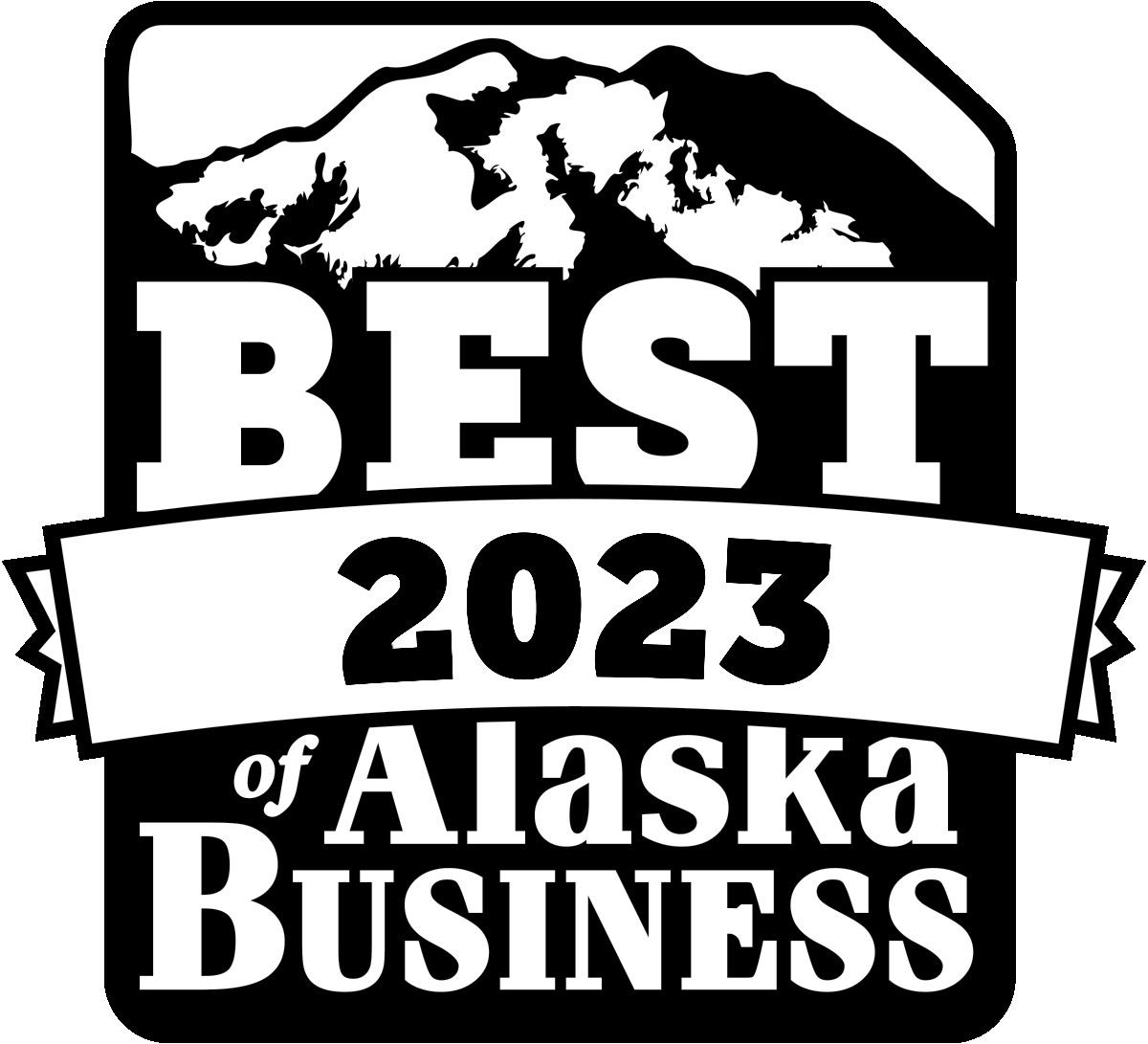
Meet Chelsea!
n the rugged heart of Alaska—where mountains carve the sky and silence is broken only by the wind—lives a woman shaped by both the land and the future. A born-and-raised Alaskan, her roots run deep: from organizing tools in her father’s auto body shop and singing in the paint booth to standing beside her grandfather at political events, applauding innovation and purpose-driven leadership.
Surrounded by postcard-worthy beauty, she learned early the value of hard work, family, and community. That foundation guided her through a diverse career, from auto repair to healthcare, oil and gas, and now media. Each step taught her something new, but the common thread has always been clear communication, authentic relationships, and a passion for helping others succeed.
risis communication should be fully integrated into an organization’s business continuity process with a well-planned communication component throughout each level of response: planning/training, mitigation, response, and recovery, says Alaska Communications’ Heather Cavanaugh. But having a plan isn’t enough; organizations must rehearse it. “Get all members of your crisis response team together at least once per year to rehearse a mock scenario,” she explains. “Debrief after your exercise to identify what worked and what didn’t.”
Over-communication is often acceptable in a crisis. “It can be instinctual to want to wait until you have all the facts before saying anything, but you can’t operate this way in a crisis,” Cavanaugh says. “Share what you know when you know it.”
Monitor social media to hear what customers or the community are saying, Cavanaugh says. Respond as appropriate and show empathy. After the crisis subsides, convene an after-action review.


Thursday, Sept. 4, 11:30 a.m. to 1:30 p.m.
Dena’ina Center
Paid Advertisement

Port MacKenzie

Photo Credit: Port Mackenzie
ort Mackenzie is a distinctive hub with thousands of acres of land specifically zoned for industrial and commercial development. The land includes two miles of shoreline reserved for future port infrastructure and four square miles of tide and submerged land, eliminating the need to acquire state tideland leases. With the deepest draft dock capability in the Upper Cook Inlet, the port is arguably the area’s most valuable piece of real estate for opportunity and economic activity.
“Port Mackenzie is a gateway to the world,” says Port Director David Griffin. “We have deep water and can operate year-round. And being so close to the Don Young Port of Alaska in Anchorage, we are located on a well-travelled marine highway, providing our port with regional maritime resources—including the US Coast Guard, pilots, and tug operators.”

ust below Anchorage’s Government Hill neighborhood, near the mouth of Knik Arm, sits one of Alaska’s most critical lifelines: the Don Young Port of Alaska. Every week, ships glide into this industrial artery, carrying goods that fuel daily life statewide. From groceries and gasoline to construction materials and jet fuel, vast volumes of Alaska’s inbound cargo pass across its docks.
Without the port, shelves would empty, fuel tanks would run dry, and disaster response plans would falter. As the port’s essential role has grown, so, too, has corrosion worn away at its decades-old infrastructure, which has become outdated and inefficient. This collision of port criticality with aging and obsolescence prompted the Port of Alaska Modernization Project (PAMP).
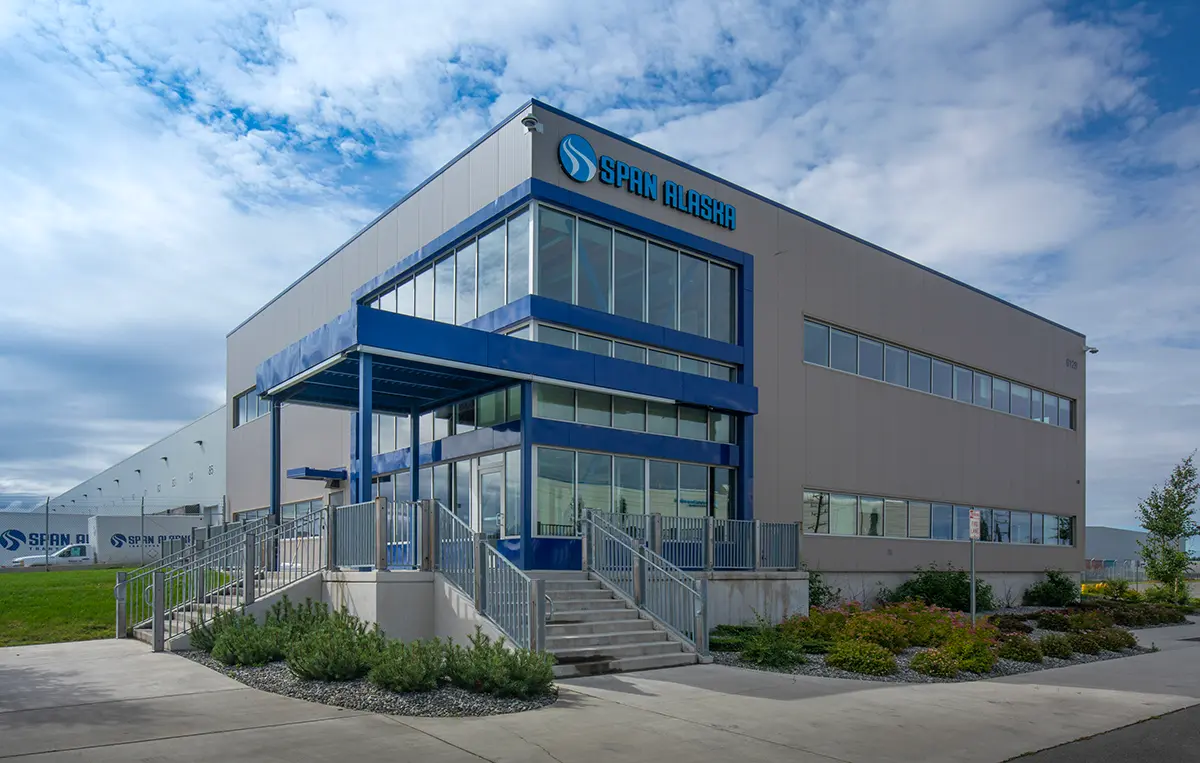
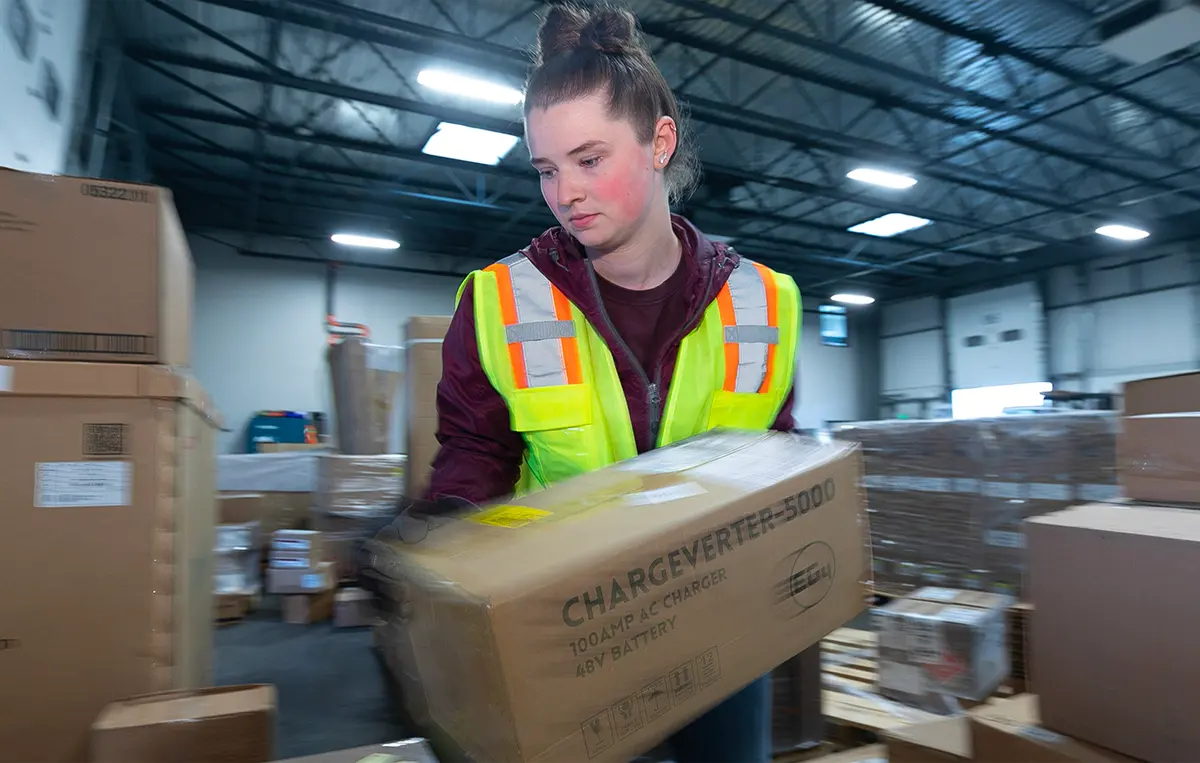
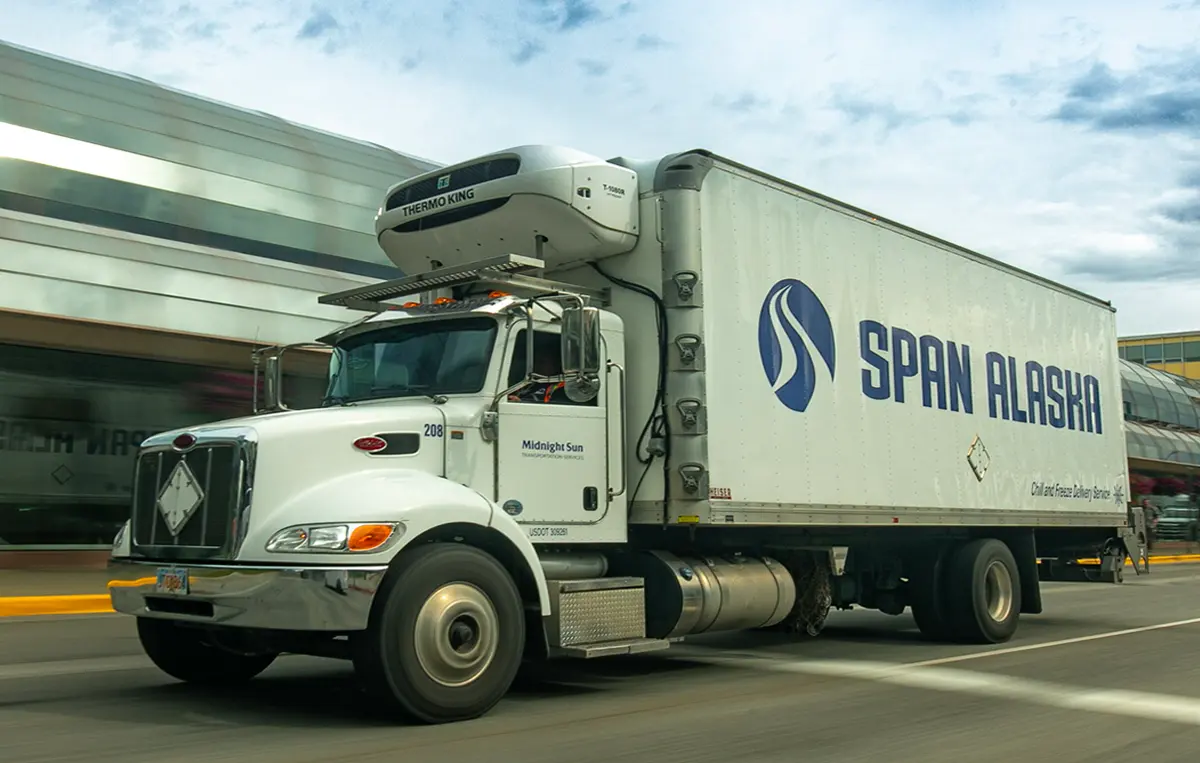


At our West Coast Consolidation Center, we load your products into dedicated containers that transit directly to one of six service centers or air cargo facility for final-mile delivery. This eliminates extra rehandling and costly delays.
- Year-round weekly ocean transit in all conditions
- LTL, FTL, Chill/Freeze, and Keep From Freezing Protection options
- Specialized equipment for project, oversized, and hazardous material loads
- Delivery throughout Alaska, from metro Anchorage to North Slope to remote villages in the Bush
- Customized solutions for commercial and industrial sectors, including oil and gas, construction, F&B, and retail/tourism
Consolidation Centers: Auburn WA • Chicago IL
Alaska Service Centers: Anchorage • Fairbanks • Juneau • Kodiak • Soldotna • Wasilla
The US Department of the Air Force started AFWERX in 2017 to serve as an innovation engine in cooperation with the Air Force Research Laboratory. The organization, which encompasses the Ventures, Spark, Prime, and SpaceWERX programs, has awarded more than 10,000 contracts worth $7.2 billion since 2019. In the 2024 fiscal year alone, Air Force Materiel Command awarded 260 Phase III transition contracts totaling $1 billion in value.
f you live in Alaska, you’ve likely felt the impact of population changes across our communities. For more than a decade, more people were moving out of the state than moving in.
Recently, there’s been a small but promising shift. According to new estimates from the Alaska Department of Labor and Workforce Development, Alaska’s population grew by 2,274 people from 2023 to 2024—a 0.3 percent increase that brought us above 741,000 residents for the first time since 2018.
That’s encouraging news and worth celebrating. However, it’s essential to understand that, while the overall population ticked up, outmigration is still an issue—especially in rural communities and among younger Alaskans leaving for school or work and not returning. The slight bump in population doesn’t mean the trend has reversed across the board. For many industries, including technology, the challenge of finding and keeping local talent remains very real.
viation travel in Alaska is essential for businesses that need to move employees from one location to another for work. While larger aircraft typically operate between cities and smaller regional hubs, smaller aircraft are frequently used for the shorter, more remote routes. As of December 2020, the Federal Aviation Administration (FAA) counted 396 public-use airports in Alaska. Of those airports, 284 are land-based, with four heliports and 108 seaplane bases. Due to the vast size and limited road infrastructure, Alaska has the highest number of airports per capita in the United States.
But they are not all made alike. Today, the state operates more than seventy runways, many of which are in remote areas. Most of these are gravel airstrips roughly 3,300 feet long. Some are tucked into valleys, others sit on mountainsides, and several require long approaches over water. Given these conditions, ensuring the safety of company personnel is critical. This requires that companies assess their unique aviation exposures and develop plans that enable employees to complete each flight safely and successfully.
Part 33 of an ongoing video series.
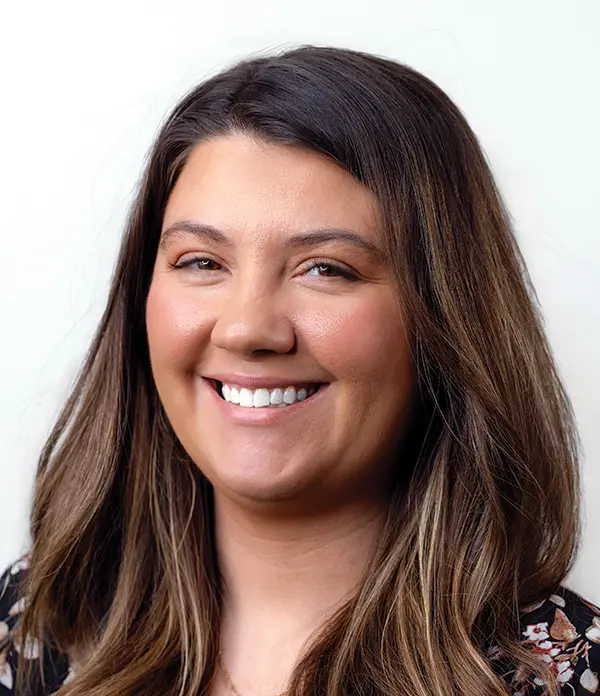
 Upon the retirement of Janis Plume from Alaska Business Publishing Company, the Sales Department gained a new Account Manager. Chelsea Diggs applies her experience from personnel services firm Airswift to the world of advertising. From the healthcare and oil and gas sectors, Diggs gained expertise in project management, strategic planning, and data analysis. She has served as president of the Anchorage Petroleum Women’s Association and volunteers at the Anchorage Pioneer Home and with her local parent-teacher association.
Upon the retirement of Janis Plume from Alaska Business Publishing Company, the Sales Department gained a new Account Manager. Chelsea Diggs applies her experience from personnel services firm Airswift to the world of advertising. From the healthcare and oil and gas sectors, Diggs gained expertise in project management, strategic planning, and data analysis. She has served as president of the Anchorage Petroleum Women’s Association and volunteers at the Anchorage Pioneer Home and with her local parent-teacher association.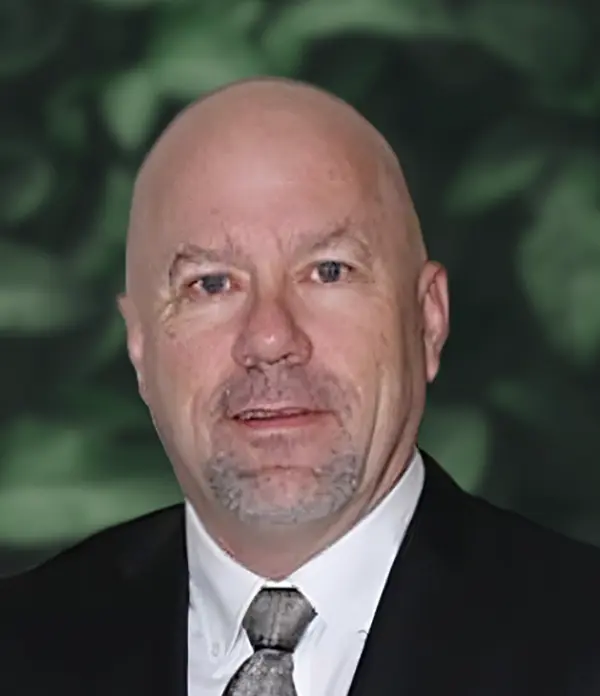
 Developers of the Donlin gold prospect in the Middle Kuskokwim region hired an industry veteran as General Manager. Todd Dahlman comes to Donlin Gold after previously serving as vice president and deputy general manager at Kinross Gold’s Fort Knox Mine. Dahlman succeeds Enric Fernandez, Donlin Gold’s permitting and environmental manager, who served as interim general manager. Dahlman began his mining career in 1986 in his hometown of Butte, Montana. Dahlman holds a bachelor’s degree in mining engineering from Montana Technological University and an executive MBA from the University of Utah. In 2024, he completed the Advanced Management Program at Harvard Business School.
Developers of the Donlin gold prospect in the Middle Kuskokwim region hired an industry veteran as General Manager. Todd Dahlman comes to Donlin Gold after previously serving as vice president and deputy general manager at Kinross Gold’s Fort Knox Mine. Dahlman succeeds Enric Fernandez, Donlin Gold’s permitting and environmental manager, who served as interim general manager. Dahlman began his mining career in 1986 in his hometown of Butte, Montana. Dahlman holds a bachelor’s degree in mining engineering from Montana Technological University and an executive MBA from the University of Utah. In 2024, he completed the Advanced Management Program at Harvard Business School.Alaska Trends
he largest philanthropic organization in Alaska gave away more cash in 2022 than the rest of the top ten private foundations combined. According to a 2024 economic impact report from The Foraker Group, the Rasmuson Foundation awarded nearly $32.6 million to various causes that year. The foundation continues the Rasmuson family legacy of giving away wealth since 1955, even before Elmer Rasmuson invested earnings from National Bank of Alaska into oil fields to become fabulously rich (for an Alaskan).
The Rasmuson Foundation was originally endowed with $3,000, worth about ten times as much these days and therefore a bit outside a typical household budget. Yet nearly 150,000 ordinary folks volunteered their time in 2022, according to the report, averaging almost one hour per week for $9.5 million in economic benefit. Individuals in the aggregate contribute at the same order of magnitude as some of the state’s largest corporate donors. National Bank of Alaska’s successor, Wells Fargo, has given approximately $4.8 million over the last four years. In 2024 alone, Alaska Airlines distributed $5 million in Alaska in cash and in-kind donations. And ConocoPhillips Alaska averages $6.7 million annually to Alaska causes.
Lion in the White House: A Life of Theodore Roosevelt by Aida Donald and Can’t Hurt Me: Master Your Mind and Defy the Odds by David Goggins.
What vacation spot is on your bucket list?
The Seychelles.
If you could domesticate a wild animal, what animal would it be?
Rocky Mountain [bighorn] sheep, Dall sheep, or Stone’s sheep.
What’s the first thing you do when you get home after a long day at work?
Plop down, talk to the wife, and just relax.
What do you do in your free time?
I go fishing, go to my cabin at China Poot [Bay] to just get away from it all.
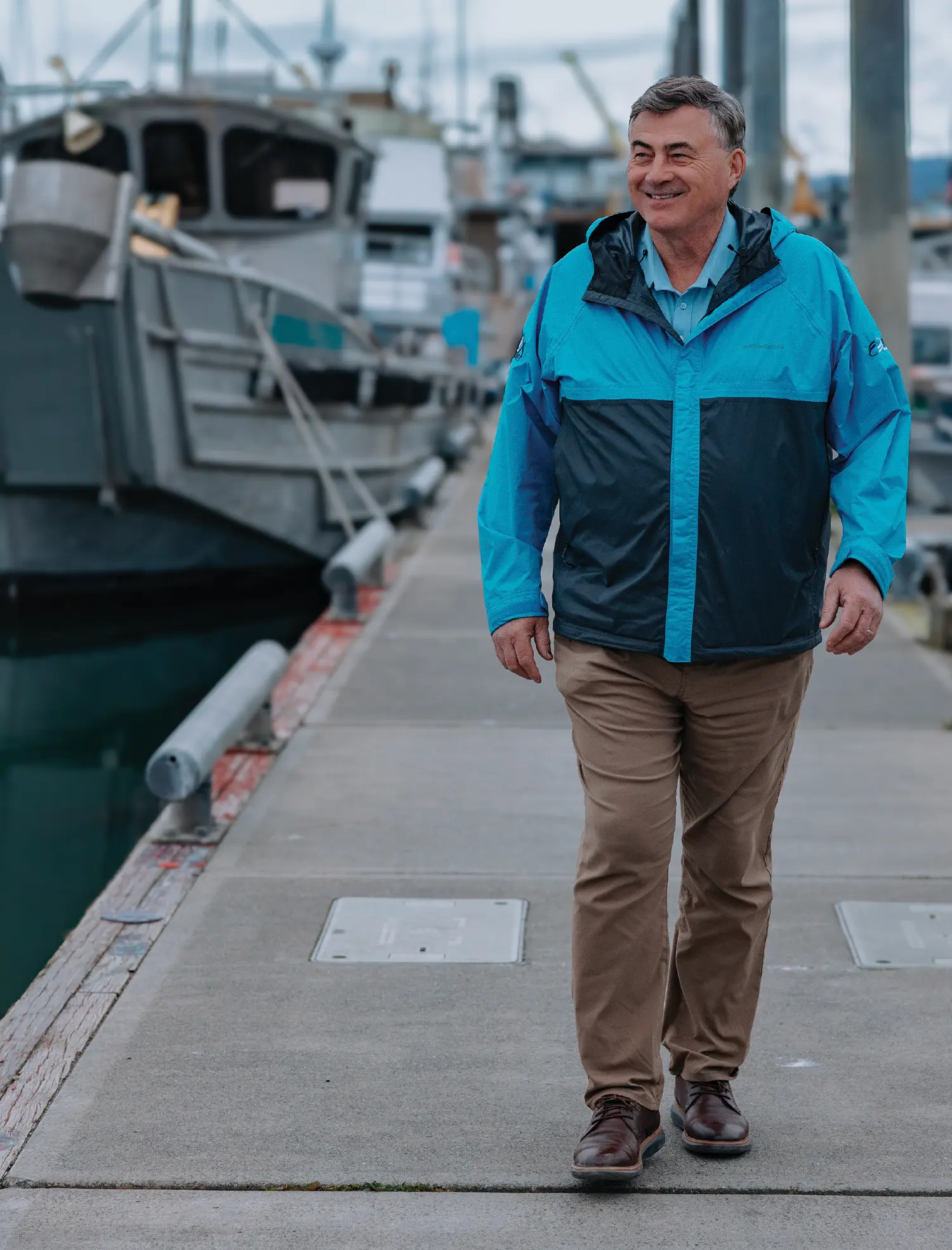
Lion in the White House: A Life of Theodore Roosevelt by Aida Donald and Can’t Hurt Me: Master Your Mind and Defy the Odds by David Goggins.
What vacation spot is on your bucket list?
The Seychelles.
If you could domesticate a wild animal, what animal would it be?
Rocky Mountain [bighorn] sheep, Dall sheep, or Stone’s sheep.
What’s the first thing you do when you get home after a long day at work?
Plop down, talk to the wife, and just relax.
What do you do in your free time?
I go fishing, go to my cabin at China Poot [Bay] to just get away from it all.
Off the Cuff
here she was, perhaps the only 90-year-old woman ever to set foot on a Cook Inlet offshore platform. John Hendrix brought his mother to his workplace last year, and he wishes more Alaskans could see the “invisible economy” of oil and gas.
“If we were spending $52 million in downtown Kenai or Anchorage, it’d be a couple big structures,” Hendrix posits. “But if you spend in the middle of Cook Inlet or the North Slope, no one sees it except a very small population.”
Hendrix is a population of one, the only CEO of an Alaskan-owned gas explorer, ever since his HEX acquired Furie Operating Alaska in 2019. To cultivate more peers, he’s leading by example. “We have a lot of non-Alaskans taking a lot of risk, so I think it’d be good to help and mentor other Alaskans wanting to get into this world.”
- 3-Tier Alaska
- Ahtna, Inc.
- Airport Equipment Rentals
- Alaska Dreams Inc.
- Alaska Materials
- Alaska Mergers & Acquistions, LLC
- Alaska Oil & Gas Association
- Alaska Pacific University
- Alaska Railroad
- Alaska School Activities Association
- American Heart Association
- Anchorage Convention Centers
- Anchorage Sand & Gravel
- Arctic Slope Regional Corporation
- ASRC Energy Services, LLC
- Ballard Spahr LLP
- Birch Horton Bittner & Cherot
- Cascadia Cross Border Law Group LLC
- Chicklo Law Group
- CIRI
- ConocoPhillips Alaska
- Conrad-Houston Insurance Agency
- Construction Machinery Industrial
- Cook Inlet Tug & Barge Inc.
- Craig Taylor Equipment
- Crowley Fuels
- Cruz Companies
- Culmination Machine Works
- Davis Wright Tremaine Llp
- Denali Commercial
- Denali Universal Services
- DesertAir Alaska
- Design Alaska
- Dorsey & Whitney LLP
- DXP/Alaska Pump & Supply
- Fairbanks Economic Development Corporation/Alaska Defense Forum
- First National Bank Alaska
- Frampton Opinsky, LLC
- Gana-A' Yoo Ltd.
- Global Credit Union
- Greer Tank
- Highmark Marine Fabrication, LLC
- IMA Financial Group
- JDO Law
- Koniag Inc.
- Landye Bennett Blumstein LLP
- LONG Building Technologies
- Lynden
- MT Housing Inc.
- MTA - Matanuska Telecom Association
- NANA Regional Corp.
- Nenana Heating Services, Inc.
- NMS
- Nortech Environmental & Engineering
- North Star Behavioral Health System
- Northern Air Cargo
- Northern Air Cargo
- Northrim Bank
- Oxford Assaying & Refining Inc.
- PeopleAK
- PND Engineers Inc.
- Port Mackenzie
- Resolve Marine
- RESPEC
- Samson Tug & Barge
- Santos
- Schwabe, Williamson & P.C.
- Sheet Metal Inc.
- Sourdough Express, Inc.
- Span Alaska Transportation LLC
- Structured Communication Systems
- SYSTEMCENTER ALASKA
- T. Rowe Price
- Teamsters Local 959
- The Plans Room
- The Walking Store
- Think Office
- TOTE Maritime Alaska LLC
- Tutka LLC
- UAF Corporate Enrollment
- Udelhoven Oilfield System Services, Inc.
- Ukpeagivik Inupiat Corporation
- Ukpeagivik Inupiat Corporation
- United Way of Anchorage
- United Way of Anchorage
- University of Alaska Office of Public Affairs
- Western Pacific Crane & Equipment
- Yukon Equipment Inc.
907.456.2000
907.522.6466
907.659.2000
907.895.9898
907.474.2000
907.335.5466
Fairbanks
907.456.2000
Anchorage
907.522.6466
Prudhoe Bay
907.659.2000
Delta Junction
907.895.9898
The Rental Zone
907.474.2000
Kenai Peninsula
907.335.5466












